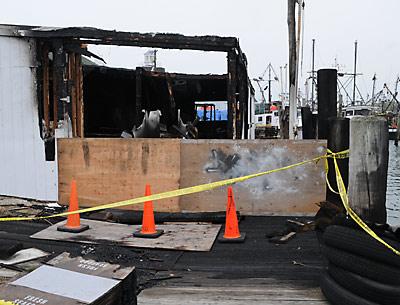Hungry ‘Belly’ Is Ready
Hungry ‘Belly’ Is Ready

Besides endless traffic and lines at the grocery stores, overflowing garbage cans are another downside of the summer population explosion.
But now East Hampton Village will be doing something about it, at least at one site on Newtown Lane, where the village will be testing a solar-powered trash compactor, known as the BigBelly, for a period of weeks starting sometime in mid-June.
Not only will the BigBelly continue tamping down the trash, but when the receptacle is full, it will automatically send an alert to a Web-based program announcing that it is ready to be emptied.
“It’s attractive, and no bigger than a regular trash can,” said Larry Cantwell, the East Hampton Village administrator. Mr. Cantwell acknowledged that at the height of the summer, the Parks Department will need to empty each regular can every day, increasing labor hours, vehicle wear-and-tear, and fuel use.
The cost of a new BigBelly, now in its fourth incarnation, is around $4,000, but Mr. Cantwell said that the village will be able to calculate what the cost savings are by using the trash compactor for a few weeks. “If it only needs to be emptied once every four days,” he said, “in theory, that’s reducing the cost of pickup to 25 percent.”
“At the end of the period, if we’re impressed with the results, we may buy one,” Mr. Cantwell said.
East Hampton Village would then join the ranks of big cities like Philadelphia and Chicago, or closer to home, Port Jefferson, which has 20 of them, according to Franklin Cruz, the chairman and founder of D.E.C. Green in the Bronx, the company that manufactures the BigBelly.
“The mayor of Port Jefferson has told me personally that she is thrilled with them,” Mr. Cruz said in a telephone interview on Monday. The BigBelly is now accepting refuse in all 50 states and in 30 countries around the globe.
“Your typical trash receptacle has a limited capacity,” said Mr. Cruz, who is a native Long Islander. “In a municipal sense what we have here is an archaic system at tremendous expense in fuel, labor, pollution. These are cutting-edge appliances that are entirely off the grid.”
“With a more limited workforce in the municipalities due to budget constraints, and more people enjoying stay-cations, also due to economic reasons, the need has gone up while the resources have remained the same or been reduced,” Mr. Cruz said. “The BigBelly is just a good idea.”
As litter rises to a certain point in the receptacle, it breaks through an internal beam that sends a message, to a computer or even a smartphone, saying it’s time to pick up the trash.
The village’s BigBelly will take its place at what Mr. Cantwell described as one of the most active trash sites — outside the Scoop Du Jour ice cream shop on Newtown Lane. “That receptacle seems to get filled up quickly with napkins and paper cups, especially during the evening,” Mr. Cantwell said.
Mr. Cruz said the system is very low maintenance, with a 12-volt battery that needs to be replaced approximately once every four years. Each BigBelly is expected to last for about a decade.
“We are excited to be participating in the upcoming pilot program for East Hampton,” Mr. Cruz wrote in an e-mail, “as we are confident that with a compaction ratio of five traditional trash baskets to one, the BigBelly will produce a minimum 80-percent reduction in the number of pickups, an 80-percent reduction in fuel consumption and related CO2 emissions, which contribute to climate change, traffic congestion, and wear and tear on roads, plastic bags going to the landfill prematurely — all the while helping to improve curb appeal.”






